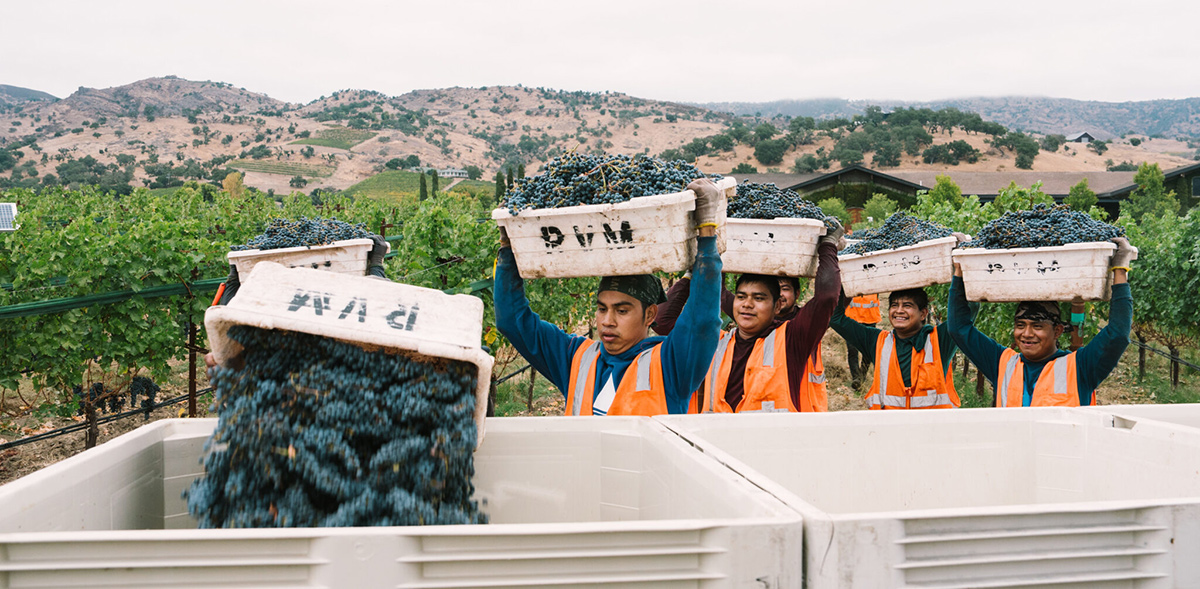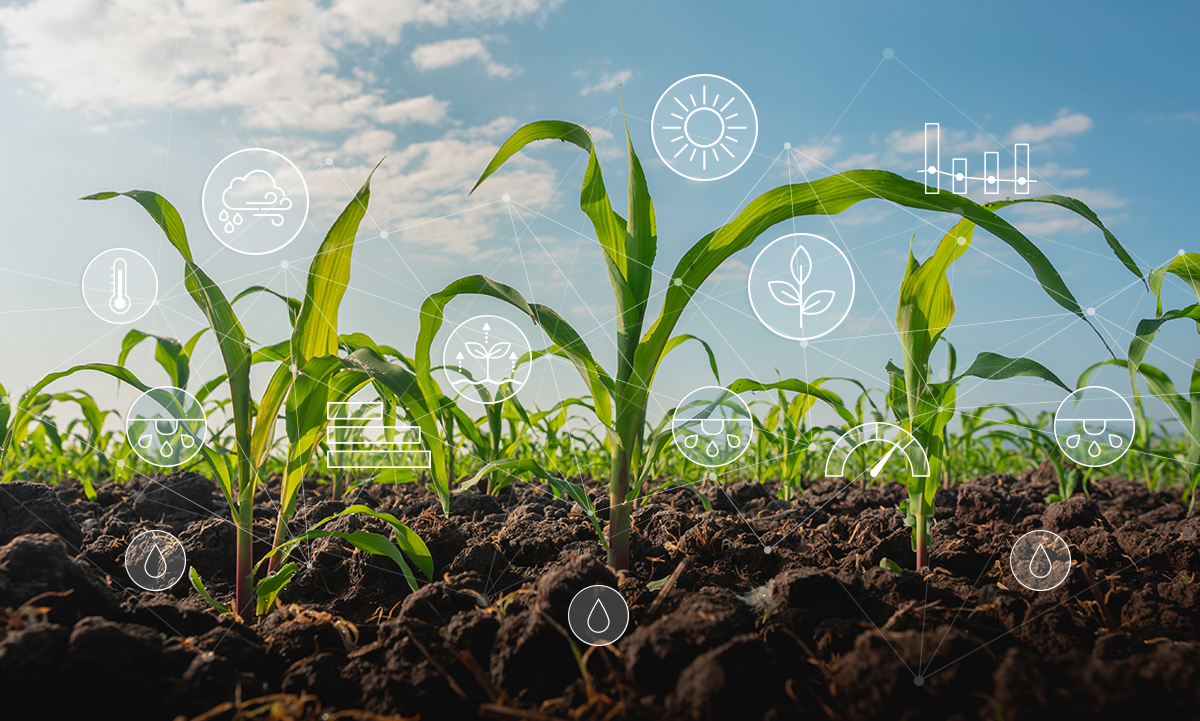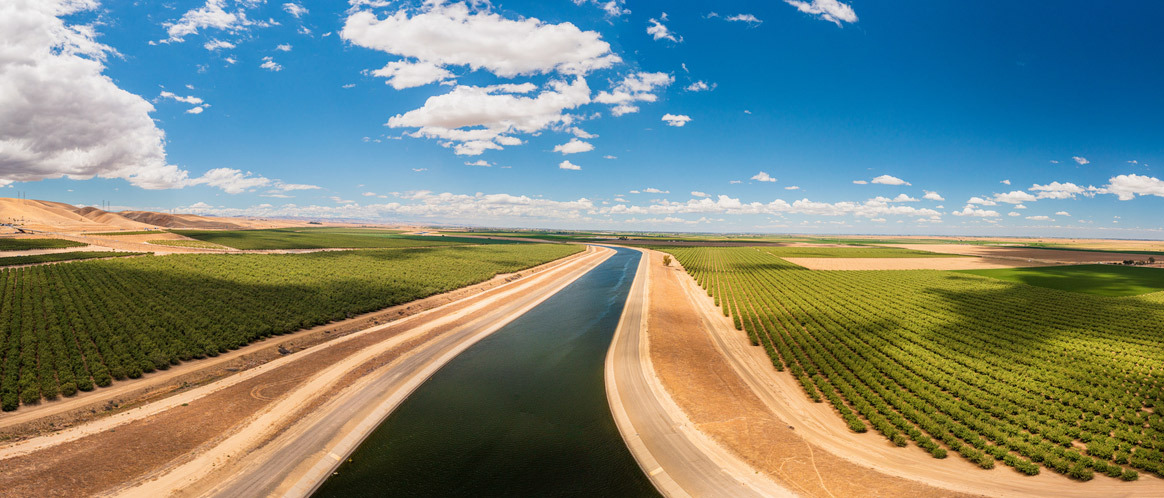Water Wise: 7 Reasons to Adopt a Data-Driven Irrigation Strategy
The challenges facing agriculture are monumental. Growers bear the burden of feeding a rapidly expanding population. Rising temperatures and extreme weather caused by a changing climate are leading to declines in terrestrial water storage, challenging crop resilience, and driving irreversible changes in land fertility. These factors are already straining the world’s food supply, despite productivity advancements over the last several decades.
To meet these challenges, growers more than ever need to have a full understanding of what’s happening in their fields. Holistic, data-driven insights are required to manage the diversity of crop types, plant growth stages, soil types, microclimates, and changing weather patterns—while still maintaining productivity and profitability.
These insights can inform critical decisions related to a range of farming practices including irrigation planning and management. With real-time, in-field monitoring, growers can access the data they need to understand how much water their crop needs. This allows them to maximize the potential of every precious drop of fresh water, which today makes up less than 1% of the planet’s total water. With deeper insight, farmers are in a better position to do more with less. They can avoid miscalculating irrigation reductions that can adversely impact crop quality and yield (and ultimately income). Most importantly, they can make informed and timely decisions that deliver positive outcomes for the crop, the grower, and the environment, as outlined below.
1. Improve water use efficiency.
With nearly 40% of water used in agriculture drawn from unsustainable groundwater sources, traditional irrigation practices have become impractical. Growers worldwide are now compelled, either by changing climate conditions or government mandates, to reduce water usage.
The adoption of smart IoT technology is enabling growers to implement data-driven irrigation management strategies that offer numerous benefits, including water conservation. A 2022 study highlighted that soil moisture sensor controllers and evapotranspiration controllers achieved water savings of over 20%, while rain sensors saved more than 7%—all without compromising crop growth and yield.
More comprehensive systems like Arable, go even further by delivering real-time, field-specific insights into a crop’s water demand. By synthesizing essential variables for irrigation decisions—such as rainfall, temperature, crop evapotranspiration (ETc), soil moisture, growing degree days, and crop growth stage—growers can align their irrigation plans with the crop’s precise needs. This holistic approach minimizes the risk of over- and under-irrigating, ensuring that every drop counts.
As an example, in 2023, a large Midwest corn and soybean producer used Arable to identify field-specific water needs and rainfall amounts. These insights informed multiple changes in their irrigation strategy, resulting in a 22% reduction in water use compared to the previous year, without any negative impact on crop yields.
2. Enhance crop quality and yield.
With a data-driven strategy, growers can provide the optimal amount of water to the plant at just the right time to optimize vigor and reduce plant stress. Armed with a complete picture of how much water was applied as well as how much is available to the plant in the soil, growers can avoid over-irrigating and ensure that excess water isn’t sitting on plant vegetation and soil where it can encourage the development of fungal diseases and pests. In addition, deeper insight into field and crop conditions supports quick identification and remediation of water stress before it jeopardizes yield.
In some crops, however, plant stress is a good thing. Growers of tomatoes and wine grapes often employ regulated deficit irrigation (RDI) to enhance fruit sugars. Implemented successfully, RDI can significantly improve fruit quality, but it requires a fine-tuned strategy and diligence. With advanced in-field sensing systems, growers can monitor key environmental and plant health variables to ensure RDI is implemented at the right time and is closely managed.
According to Ryan Decker, Viticulture and Grower Relations Manager at winery Clos du Val, “Getting irrigation right is key to meeting our quality and yield objectives. Using Arable, I can strike the right balance to optimize both.”
Click HERE to discover how Clos du Val used a data-driven approach to improve irrigation and efficiency.

3. Save money and time.
Although digital irrigation solutions require an upfront investment, most growers see a return within the first year and achieve significant long-term savings. These cost savings come from various sources, including reduced energy consumption for running irrigation equipment and decreased wear and tear on machinery. For instance, the same Midwest farm experienced a reduction of 4 cents per kilowatt hour by watering overnight (off-peak), which also minimized water loss due to windy conditions and daytime evaporation. Additionally, many operations using these technologies see reductions in labor costs and fuel expenses due to fewer wasted trips to the field.
Armed with comprehensive data, farmers can improve planning and enable proactive scheduling of irrigation cycles. In Nebraska, a study found that irrigation scheduling can save an average of 35% in water and energy. Specifically, producers saved about 550 kWh per acre using a center pivot sprinkler or 200 kWh per acre with a gated pipe.
Over time, the savings from reduced water, energy, and fuel, coupled with increased income from better yields, will significantly offset the initial costs of adopting these systems.
4. Conserve and protect natural resources.
Data-driven irrigation conserves not only water but also other natural resources. With a comprehensive understanding of a crop’s water needs and usage, growers can optimize irrigation, reduce the energy required to pump water, and subsequently decrease their carbon footprint.
Optimized irrigation also supports soil health and prevents soil erosion. A study in Australia examined the impact of irrigation on soil and found that more intensive irrigation methods can accelerate mineral weathering and leach soluble and colloidal material, ultimately changing soil structure and encouraging compaction. Employing a data-driven approach, growers can choose more precise irrigation methods that deliver water when and where it’s needed, ensuring a positive impact on the crop while preventing negative side effects on the soil and ecosystem.
5. Improve climate resilience.
Increasing temperatures and more unpredictable weather patterns, including prolonged droughts and irregular rainfall, are impacting what crops can be grown where. In addition to developing more climate-resistant genetics, agriculture will need to adjust management practices to improve crop resilience—and will need the intelligence to inform those practices. As unpredictability becomes the norm, having localized insights combined with broader weather and environmental data will be critical.
For winegrowers like Treasury Americas, a division of Treasury Wine Estates, improving climate resilience is a top priority, particularly given the sensitivity of the vines used in fine winemaking. “There’s an immediate, obvious cost to making the wrong decisions in light of weather events caused by climate change—specifically, poor yield and quality—and also an immediate prize to being nimble and adapting while also reducing future risk,” explains Will Drayton, Director Technical Viticulture, Sustainability & Research at Treasury Wine Estates.
6. Reduce nutrient runoff.
Irrigation and nitrogen fertilizer contribute to higher yields and greater productivity, but when mismanaged, they can impose significant costs on both the grower and the environment. According to the United Nations, half of synthetic fertilizer applied by agriculture globally is lost as pollution or wasted by denitrification. Nitrogen leaching and runoff impact freshwater resources, with up to 40% of lakes and reservoirs globally being affected by water eutrophication (i.e., dead zones).
Using a targeted approach to irrigation can ensure that fertilizer stays with the crop where it provides the most value. With the insights provided by in-field monitoring, growers can ensure weather and crop conditions are optimal for the most effective and efficient nutrient application and limit the detrimental downstream impacts of over-irrigation.
7. Promote sustainable agriculture.
Ultimately, using data-driven irrigation strategies contributes to the broader goals of sustainable agriculture by balancing the need for food production with the imperative to conserve environmental resources. Technology like Arable supports the long-term viability of farming, ensuring that it remains productive and profitable without depleting the natural resources future generations will depend on.
Driving Productivity, Profitability, and Sustainability with Data-Driven Decisions
To conserve freshwater for the planet and build a productive, resilient global food system, agriculture must continue its evolution to data-driven decision-making. Growers will need tools and technology like Arable that make it easy to translate insights into action. By providing real-time insights, Arable makes it possible to optimize irrigation strategies, align with the urgent need for sustainable water management, and maximize the potential of every precious drop.
When growers have the data to inform and support irrigation decisions, they can make decisions that do more than deliver water and input savings. They can protect their crop, preserve profitability, and protect our natural resources.


